- Quick Read
- Deep Read ( 6 Min. )

Why is Christian Science in our name?
Our name is about honesty. The Monitor is owned by The Christian Science Church, and we’ve always been transparent about that.
The Church publishes the Monitor because it sees good journalism as vital to progress in the world. Since 1908, we’ve aimed “to injure no man, but to bless all mankind,” as our founder, Mary Baker Eddy, put it.
Here, you’ll find award-winning journalism not driven by commercial influences – a news organization that takes seriously its mission to uplift the world by seeking solutions and finding reasons for credible hope.
Explore values journalism About usMonitor Daily Podcast
- Follow us:
- Apple Podcasts
- Spotify
- RSS Feed
- Download
TODAY’S INTRO
How to help Ukraine? A ‘tsunami of compassion’ drives one group’s response.
Eight-year-old Lucy Gallagher sums up how many Americans feel about the Russian invasion of Ukraine: “It makes me feel sad. I want to do something.”
This past Sunday, Lucy joined her grandfather and more than two dozen other volunteers at a Pembroke, Massachusetts, warehouse preparing meals for Ukrainian refugees. Lucy is part of what Matthew Martin calls a rising “tsunami of compassion” for Ukraine.
Mr. Martin runs the nonprofit group End Hunger New England. His organization has donated 6 million meals to 400 local food pantries in the past two years. But like many charitable groups, EndHungerNE is pivoting to help Ukrainians.
“Everyone has been asking me, can we get meals to Ukraine?” he says, as volunteers around us precisely fill small plastic bags with soy powder, pasta, and other dry ingredients. The goal: 1 million meals for Ukrainians by May. As the initial $53,000 in donations rolled in, this past weekend Mr. Martin sent out a call for volunteers. The last time he saw this kind of community outpouring was after the 2010 earthquake in Haiti.
“It’s frustrating to sit on the sidelines watching what’s happening in Ukraine. We want to help,” says Catherine Briere of Duxbury, Massachusetts, as she seals plastic meal bags. Joined by her husband and two teenagers, she says it’s the first time they’ve supported a cause as a family.
But how will these meals get to Ukraine? A Boston-based shipping company, BOC International, has been swept up in the compassion wave. It’s handling all the logistics. No charge.
“It’s amazing what they’re doing at a low cost and to great effect,” says Patrick Fay, president of BOC. “My mind’s been spinning all weekend. I want to keep this relationship going.”
Nearly 160 people have signed up to prepare meals next Sunday. Nancy Mathieu of Duxbury looks around at the other bustling volunteers and observes with a smile, “Helping can be contagious.”
Share this article
Link copied.

Help fund Monitor journalism for $11/ month
Already a subscriber? Login

Monitor journalism changes lives because we open that too-small box that most people think they live in. We believe news can and should expand a sense of identity and possibility beyond narrow conventional expectations.
Our work isn't possible without your support.
Biden’s high-wire act on Ukraine
Our reporter looks at the Biden administration’s leadership on Ukraine, specifically the coalition building and developing a unified global front in opposing Russia’s invasion.
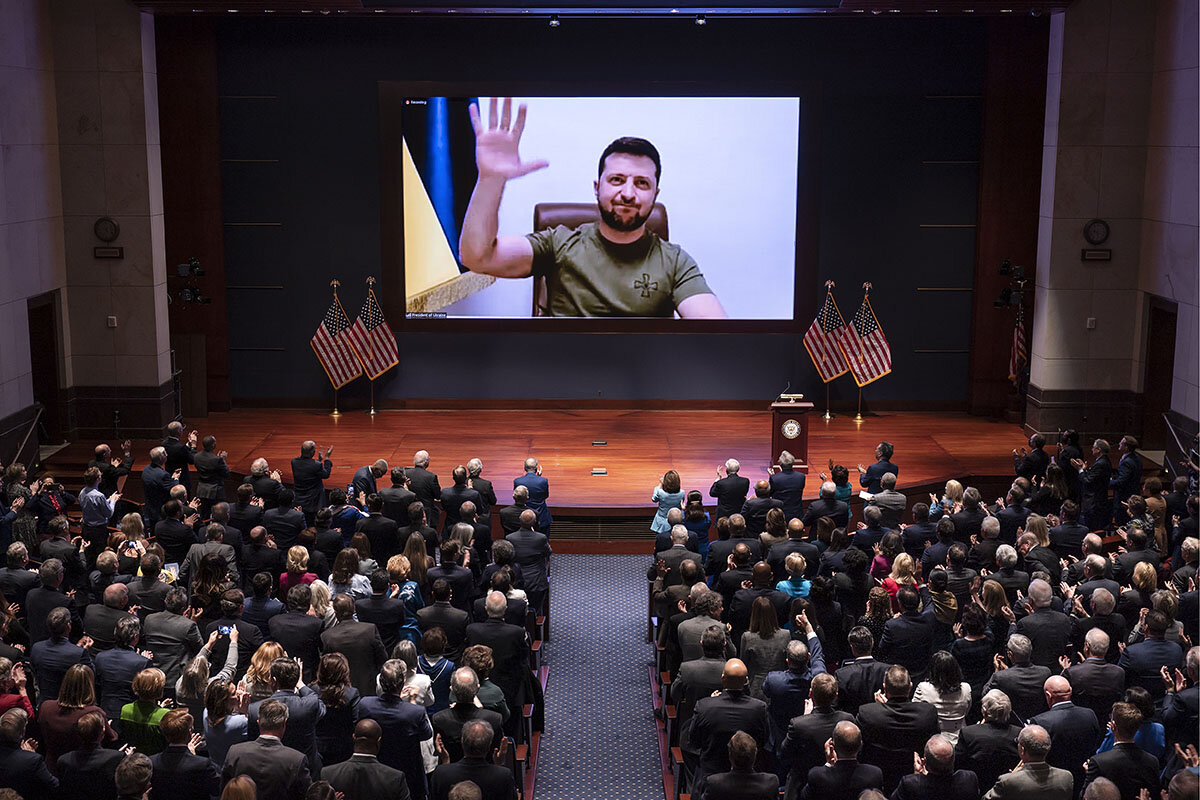
-
Noah Robertson Staff writer
In his compelling video address before a joint session of Congress on Wednesday, Ukrainian President Volodymyr Zelenskyy ended by addressing President Joe Biden directly in English.
“Being the leader of the world means to be the leader of peace,” he said, drawing applause from both sides of the aisle.
Yet in the short term, the dramatic speech by the comedian-turned-wartime-leader is likely to make President Biden’s job only more difficult. The stirring appeal, which invoked both Pearl Harbor and 9/11, put direct pressure on the United States to do more to help Ukraine, despite Mr. Biden’s stated concern that certain forms of assistance could lead to a broader war.
It may also widen political rifts at home over the conflict – and over whether Mr. Biden’s leadership has been a display of weakness or a master class in de-escalation and behind-the-scenes diplomacy in the face of the most serious threat to the global order in decades.
In U.S. political terms, “the days of a big ‘rally around the flag’ are past,” says Christopher Gelpi, a political scientist who studies military force and public opinion at The Ohio State University. “They could come back again, but right now the public is so polarized.”
Biden’s high-wire act on Ukraine
Ukrainian President Volodymyr Zelenskyy’s compelling video address before a joint session of Congress on Wednesday drew sustained applause from both sides of the aisle – a reflection of the widespread admiration for his bravery as well as the continuing horror over Russia’s relentless war on his country.
Speaking from the Ukrainian capital of Kyiv, he ended by addressing President Joe Biden directly in English.
“Being the leader of the world means to be the leader of peace,” said Mr. Zelenskyy, wearing his trademark military-green T-shirt.
Yet in the short term, the dramatic speech by the comedian-turned-wartime leader is likely to make President Biden’s job only more difficult. The stirring appeal, which invoked both Pearl Harbor and 9/11, put direct pressure on the United States to do more to help Ukraine, despite Mr. Biden's stated concern that certain forms of assistance could lead to a broader war.
It may also widen political rifts at home over the conflict – and over whether Mr. Biden's leadership has been a display of weakness or a master class in de-escalation and behind-the-scenes diplomacy in the face of the most serious threat to the global order in decades.
Soon after Mr. Zelenskyy spoke, Mr. Biden announced that the U.S. would provide another $800 million in defensive weaponry to Ukraine. But he did not relent on Mr. Zelenskyy’s pleas for MiG fighter jets or the establishment of “humanitarian no-fly zones” over his country to allow basic supplies to reach besieged Ukrainians. Mr. Biden aims to avoid direct conflict between NATO and Russian forces, which would be tantamount to “World War III,” he has said.
To that end, national security adviser Jake Sullivan spoke Wednesday to his Russian counterpart, Nikolai Patrushev – the first publicly announced high-level call between U.S. and Russian officials since the Ukraine invasion started Feb. 24. Mr. Sullivan warned Mr. Patrushev against the use of chemical or biological weapons in Ukraine, the White House said.
The domestic U.S. political calculus is also evolving. After early bipartisan support for Mr. Biden’s approach to Ukraine, including praise for sanctions against Russia and agreement that U.S. troops should not be sent into Ukraine, which is not a NATO ally, GOP leaders have lately ramped up criticism.
Republicans accuse Mr. Biden of being slow in helping a nation that has fought to become independent and democratic, after long subjugation by Russia. “American strength is not the provocation. American weakness is,” said Senate Minority Leader Mitch McConnell in a statement. “We need to help get air defense systems to Ukraine without wasting another second.”
In U.S. political terms, “the days of a big ‘rally around the flag’ are past,” says Christopher Gelpi, a political scientist who studies military force and public opinion at Ohio State University. “They could come back again, but right now the public is so polarized.”

Mr. Biden’s approval rating is at 43%, according to the Pew Research Center, up slightly from 41% in January. His approval rating for handling of the Russian invasion is slightly higher, at 47%.
President Biden has long experience in foreign policy, both as a senator of 36 years and in eight years as vice president. Some foreign affairs analysts praise the president for how quickly and effectively he helped pull the Western alliance together to address the crisis.
“The administration really laid the groundwork nicely in the run-up to the invasion, and that’s one of the reasons why they were able to reap the dividend of allies going faster than was imagined after the invasion,” says Hal Brands, professor of global affairs at the Johns Hopkins School of Advanced International Studies.
He adds, “[Russian President Vladimir] Putin is doing our diplomatic work for us so far by offering up a provocation that is so outrageous that it simply can’t be ignored.”
Some experts are also crediting Mr. Biden for not being “showy” in how he's approached the crisis. Mr. Biden has at times ceded the public spotlight to two NATO leaders – French President Emmanuel Macron and the new German chancellor, Olaf Scholz – who took lead roles in trying to resolve the conflict with Moscow before the war started.
To some extent, that makes a virtue out of a Biden weakness: his lack of a forceful public presence. Public speaking is not the president’s strong suit, and he seems to have no problem sharing the burden when it comes to taking on Mr. Putin’s aggression.
Still, experts say Mr. Putin would like nothing more than to portray the standoff as a conflict with the U.S. Mr. Biden hasn’t allowed that to happen. Mr. Zelenskyy, too, has played an outsize public role, choosing not to flee Ukraine and putting out regular videos on social media as he fights for his country’s freedom. That has further set the narrative firmly as Ukraine vs. Russia, not the U.S. vs. Russia.
But that’s not to suggest that the U.S. isn’t a major player in the Ukraine crisis. A lot is happening out of public sight, says Elizabeth Saunders, an expert on the politics of U.S. foreign policy at Georgetown University.
“You don’t observe this kind of unity in alliances unless there’s been a lot of preparatory work behind the scenes,” says Professor Saunders. “In some ways, this is a return to the norm of off-camera coordination with allies.”
Mr. Biden suffered a blow to his reputation on international affairs after the chaotic U.S. withdrawal from Afghanistan last August. Russia’s Ukraine invasion – the biggest assault on a European nation since World War II – is probably the last thing he wanted.
But it has given him the opportunity to demonstrate his chops in a part of the world he knows well – albeit not for wholly positive reasons. Ukraine was central to former President Donald Trump’s first impeachment, over allegations that he pressed Mr. Zelenskyy to provide dirt on Mr. Biden’s son, Hunter Biden, to help Mr. Trump win reelection. The younger Mr. Biden had served on the board of a Ukrainian natural gas company called Burisma.

The contrast with the Trump presidency is sharp. President Trump had hinted at pulling the U.S. out of NATO, the long-standing military alliance among the U.S., Europe, and Canada aimed at deterring Soviet and then Russian aggression, and he had used that cudgel to get NATO members to spend more on defense. Such a pullout would have fulfilled a long-held dream of Mr. Putin to weaken the alliance.
Instead, the 2020 election of the internationalist Mr. Biden ensured NATO’s longevity and allowed the U.S. and its allies to use their collective force to stand up to Russia. Next week, Mr. Biden will travel to Brussels for a special summit of NATO leaders on the Ukraine crisis.
Simultaneously, the European Union – a political and economic union of 27 European states – has also used its collective clout to pressure Russia on the economic front. When the U.S. announced its embargo of Russian oil earlier this month, EU nations also signaled plans to wean themselves from Russian energy, a more significant undertaking.
Further sanctions could be in the offing, if Russian aggression in Ukraine continues. One option is “secondary sanctions,” which target anyone doing business with a sanctioned state like Russia, says Daniel McDowell, an expert on international political economy at Syracuse University.
But Mr. Biden shouldn’t just sanction Russia as heavily as possible, Professor McDowell says. The president may face domestic pressure to respond more forcefully, he says, but the more America acts alone, the harder it becomes to coordinate allies from Germany to Japan. “Keeping the coalition together is really critical, and I think in that respect, they’ve done a really good job.”

Moldovans worry they may be next Putin target
Given the violation of Ukraine’s sovereign integrity, our reporter examines why many fear that Moldova may soon be the next nation to be invaded by Russian troops.

- Quick Read
- Deep Read ( 5 Min. )
Moldova, a small pro-Western nation of just 2.5 million people, is worried. That’s because the country stretches along Ukraine’s western flank, and the fear is that Russian President Vladimir Putin might decide to capture it, if he can.
If he did so decide, there would not be much Moldova could do about it. “We are not a very big country, and we do not have a very well endowed army,” Foreign Minister Nicu Popescu acknowledged the other day.
Just like Ukraine, Moldova is not a member of either the European Union or NATO, so could not expect much help from those directions. Adding to its vulnerability is the fact that pro-Moscow separatists, supported by Russian troops, have long controlled a strip of Moldovan territory along the Ukrainian border that they call Transnistria, though no country in the world has recognized it.
A stream of Western leaders, including U.S. Secretary of State Antony Blinken, has visited Moldova in recent weeks to show support and try to ward off any Russian attack. Can cash and kind words stop the Russian army?
Moldovans worry they may be next Putin target
The foreign minister of Moldova, a country of 2.5 million people on the western flank of Ukraine, does not mince his words. The Moldovan army, he admits, is small and ill-equipped.
“We are not a very big country and we do not have a very well-endowed army with sophisticated equipment,” Nicu Popescu said in a recent briefing in the Moldovan capital of Chisinau, a city of hulking Soviet-era government buildings, broad boulevards, and snow.
He was responding to questions about whether this small nation, which is squeezed between Ukraine and Romania, might be the next target after Ukraine on Vladimir Putin’s menu.
There is intense speculation that if Russian forces are able to take the port city of Odessa, in southern Ukraine, they might push westward and cross the border into Moldova.
In the early hours of Wednesday, Russian warships fired missiles at Tuzly, southwest of Odessa on the Black Sea coast, 50 miles from the Moldovan border.
For Moldovans, there are alarming parallels between their country and Ukraine.
Like Ukraine, Moldova was once part of the Soviet Union, gaining its independence in 1991 when the USSR disintegrated.
Like Ukraine, it is not a member of either NATO or the European Union – meaning it could not expect the protection of either bloc in the event of a Russian invasion.
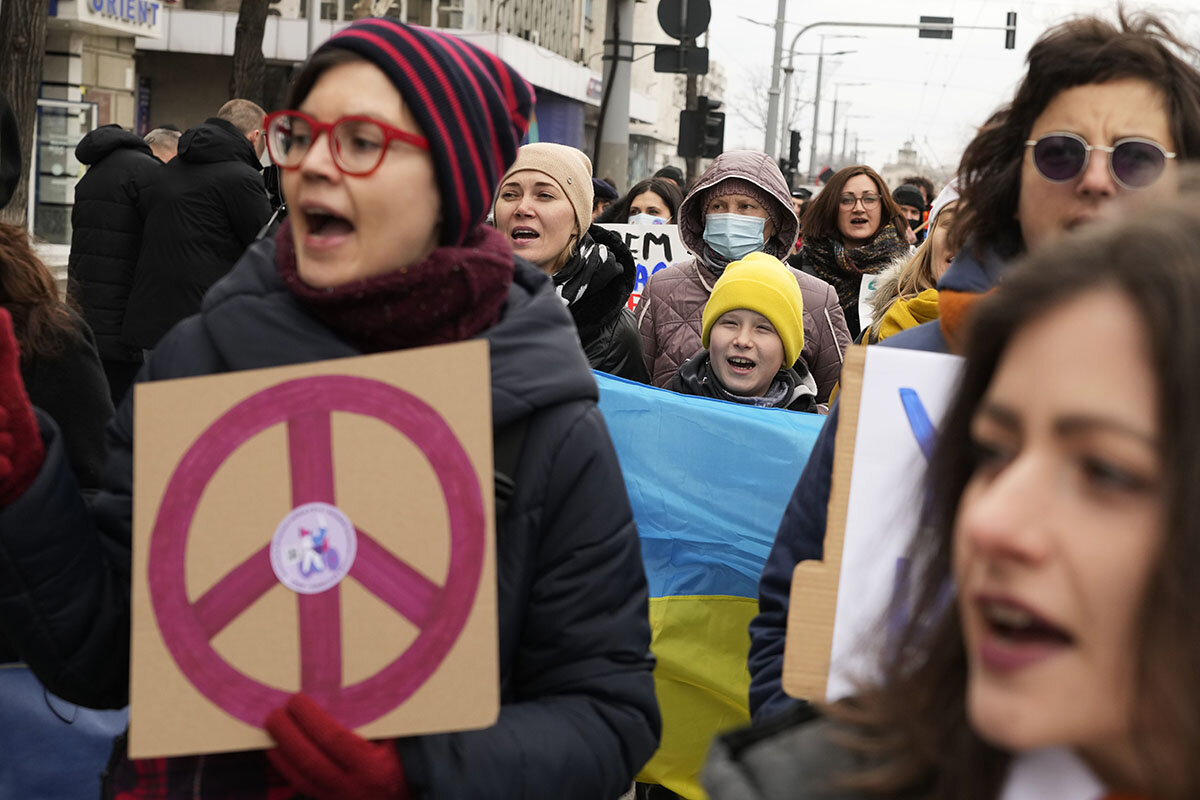
And as with the separatist regions of Donetsk and Luhansk in Ukraine, Moldova has a pro-Moscow, breakaway region within its borders that is occupied by Russian troops.
The region, called Transnistria, runs in a strip down eastern Moldova, along the frontier with Ukraine. When the region announced that it was splitting from the rest of Moldova in 1991, a brief war broke out in which hundreds of people died. No country recognizes tiny Transnistria as an independent state – not even Russia.
In a throwback to Soviet times, it has a hammer and sickle on its flag, statues of Lenin still standing in its squares, and streets named after Marx and Engels.
The territory, which lies on either side of the Dniester River, hosts a garrison of around 1,300 Russian and local troops, as well as a huge stockpile of 20,000 tons of weapons.

If the Russians did swallow up Transnistria – or indeed the whole of Moldova – they could use the territory as a springboard from which to open a new front in Ukraine.
Moldovans were deeply alarmed two weeks ago when Russia’s apparent battle plan for the region was revealed by Alexander Lukashenko, the authoritarian ruler of Belarus.
A close ally of President Putin, the dictator was seen standing in front of a map with arrows that represented Russian lines of attack pointing from southern Ukraine into Moldova.
“I was afraid when I saw Lukashenko and the map with the arrow pointing toward Moldova,” says Aline Frunza, while taking refuge in a cafe in Chisinau from a snow storm outside as the temperature plunged to 23 degrees.
“If Russia invades, we can do nothing,” says the lawyer, as waitresses serve up plates of pancakes and pizza in the brightly lit restaurant. “A lot of Moldovans are leaving the country because of the situation,” she adds. “Others are packing their bags in case there is an emergency.”
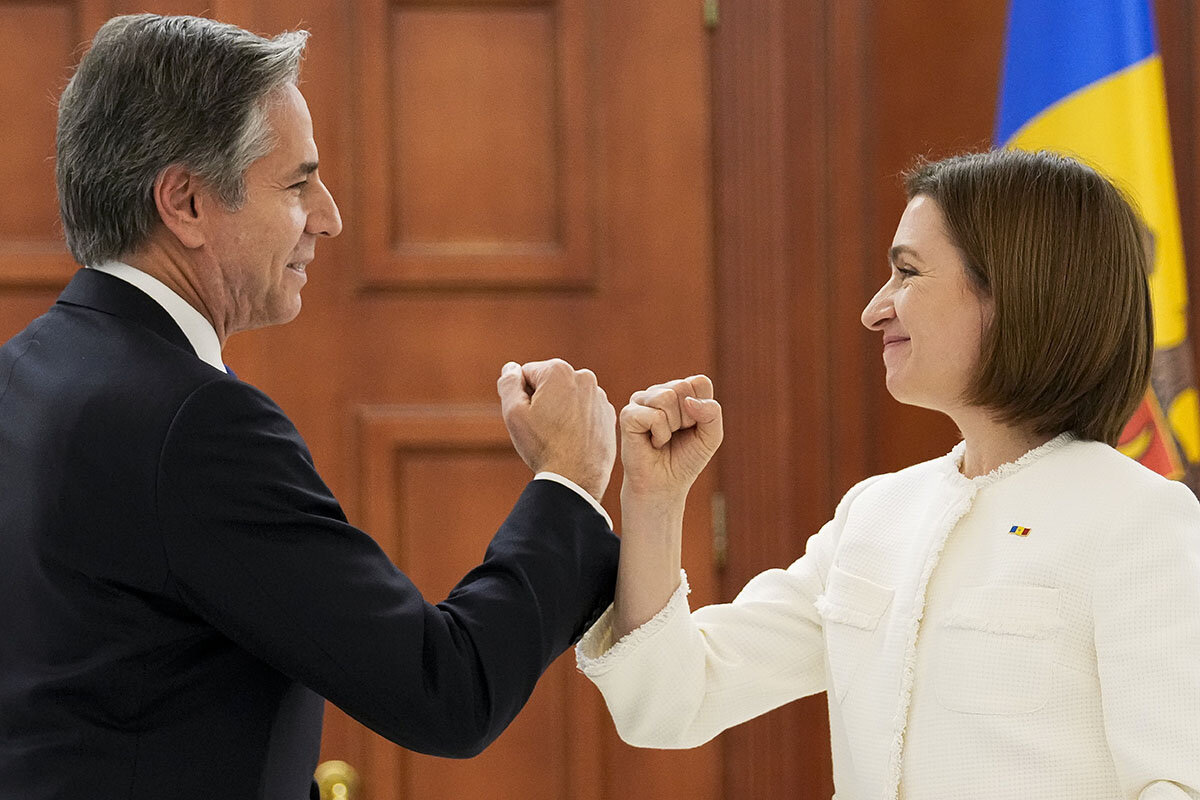
While some Moldovans flee west, more than 300,000 refugees have crossed the eastern border with Ukraine. The streets of Chisinau are clogged with cars bearing Ukrainian number plates and miniature blue and yellow Ukrainian symbols.
“A lot of people are in transit. They’re moving through Moldova to places like Romania,” says Andre, a businessman who fled Odessa a few days after the war started.
A country that is normally given scant attention on the international stage has now been pitched into the front line of the biggest conflict in Europe since the World War II.
“Get familiar with Transnistria. You’ll soon be hearing a lot more about it,” Republican Sen. Marco Rubio wrote in a recent tweet.
Nicholas Myers, a senior fellow at Strategy and Future, a think tank in Warsaw, Poland, thinks it is likely that Russia will move on Transnistria, but less probable that Moscow would try to seize the whole of Moldova.
If Russia were able to occupy the Odessa region in southern Ukraine, a linkup with Transnistria might be irresistible, he predicts. “I think that is quite likely. If the Russians take Odessa, that puts them right next to Transnistria,” he says.
One Western diplomat in Chisinau agrees. “I think there’s a very good chance that he would” seek to capture Transnistria “even though it is still a de jure part of Moldova,” he says. “I don’t think Putin would be able to resist the temptation. It would be very provocative.”
He also believes that the likelihood of Russia invading the whole of Moldova is a more distant prospect, but that if it came to pass, “Moldova couldn’t really put up much resistance.”
“Its military has very little kit, there’s no air force, and it has missiles so old that when you fire them in one direction they go off in another because the guidance systems are degraded,” he says.

The Russian objective would be to unseat Moldova’s current pro-Western government and replace it with a pro-Russia administration. To thwart any such plans, Moldova has been lavished with an unusual level of attention by a stream of Western leaders in the past two weeks.
They included Josep Borrell, the EU’s foreign policy chief; Annalena Baerbock, Germany’s foreign minister; and Antony Blinken, the U.S. secretary of state, who said, “We stand with Moldova and any other country that may be threatened in the same way.”
What that means in practice is hard to say. NATO has refused to fight to defend Ukraine, so would not be expected to commit troops to save Moldova.
Western countries are pledging money and humanitarian supplies, but cash and kind words go only so far. If Mr. Putin does decide to invade, “the fate of Moldova is whatever Putin’s whim happens to be,” forecasts Mr. Myers. “If he decides, ‘what the hell,’ then there’s really nothing to stop the Russians.”


Patterns
Ukraine invasion leaves China uncomfortably on the fence
China is attempting to support Russia’s invasion but not enough to invoke Western sanctions. It’s high-wire transactional diplomacy that may start to wobble as the war continues, our London columnist observes.

- Quick Read
- Deep Read ( 4 Min. )
China’s “unlimited” strategic partnership with Russia, announced just before the Beijing Winter Olympics, has got off to a bad start for Chinese leader Xi Jinping. Russia’s invasion of Ukraine has not gone to plan and is proving awkward for Beijing.
China is fence-sitting, not criticizing the invasion but insisting that it is not party to the conflict. At the same time, Mr. Xi has a clear interest in the success of his autocratic ally – or at least the avoidance of failure.
The Chinese leader envisions the 21st century as a “Chinese century,” when Beijing will be the dominant world power. It will need one major ally, at least, on the world stage.
Besides that, the invasion has badly disrupted China’s ambitious Belt and Road trade initiative to create a land bridge to Europe. Its key rail links run through Russia and Belarus, both now subject to far-reaching Western sanctions.
China could risk sanctions too, if it did anything to help Russia offset the impact of the measures the West has imposed. Beijing cannot turn its back on its ally, but its commerce with the West is worth 10 times more than the business it does with Russia.
Fence-sitting could yet leave China with a bad case of splinters.
Ukraine invasion leaves China uncomfortably on the fence

Xi Jinping is “unsettled.”
That’s the term the director of America’s CIA has used to assess the Chinese leader’s mood in the face of the unexpected difficulties that his closest ally, Russian President Vladimir Putin, is facing in Ukraine.
And it has set the context for this week’s U.S. diplomatic push to dissuade China from making an end run around Western economic sanctions on Russia, or from providing Moscow with drones or other weapons. National security adviser Jake Sullivan met Chinese counterpart Yang Jiechi in Rome on Monday, warning him of “the potential implications and consequences” of such support.
It also helps explain Beijing’s exercise in diplomatic fence-sitting so far: abstaining in a United Nations vote condemning Mr. Putin’s attack rather than opposing the motion, but also refraining from any criticism of Russia’s action.
China has its own reasons for wanting the violence in Ukraine to end, but Mr. Xi’s perspective on how that should come about, and what should follow, remains dramatically different from the West’s.
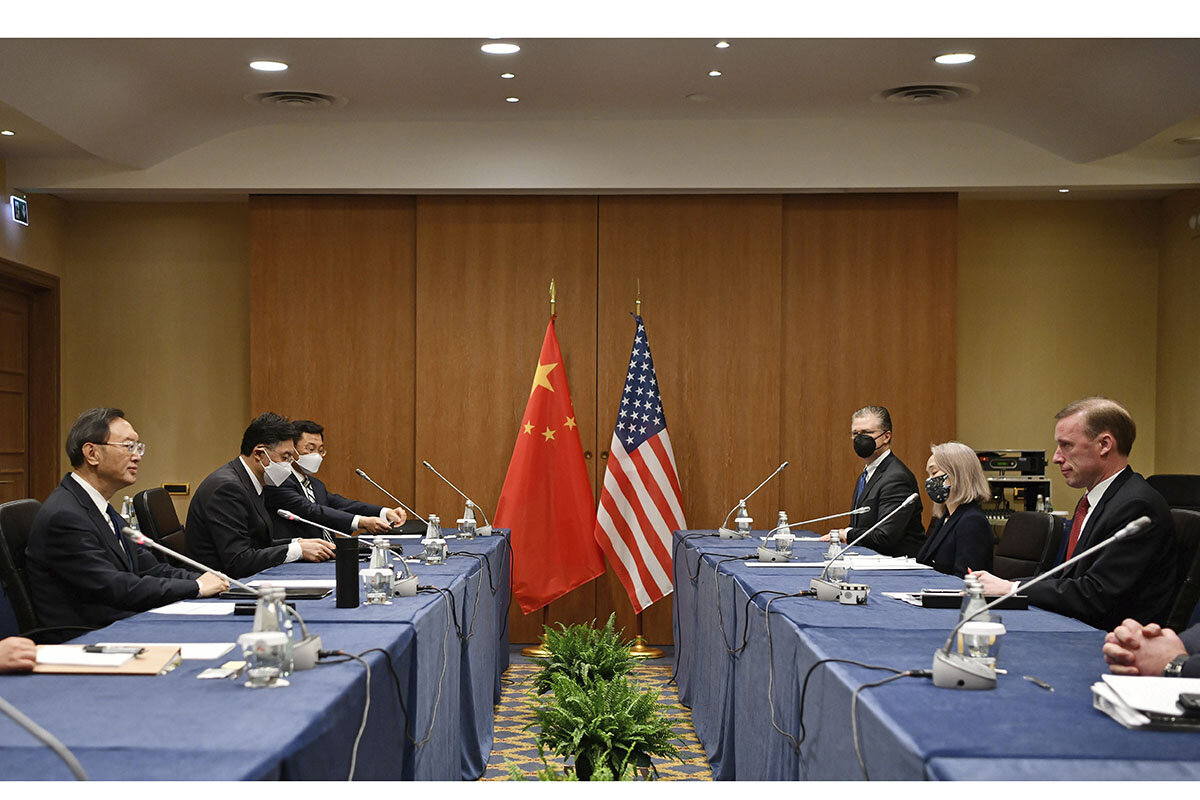
His top short-term interest: to ensure Mr. Putin’s invasion doesn’t end in outright defeat or, even worse, in a loss of power for his autocratic ally.
That’s because of Mr. Xi’s larger long-term vision of a “Chinese century,” when his nation’s economic and political heft, he believes, will make Beijing the world’s dominant power. China will need one major ally, at least, on the world stage.
That vision is one he hopes to see validated, with Ukraine in the rearview mirror, at a Communist Party conference later this year confirming him as the first leader since Mao Zedong to serve a third term of office.
Indeed if Mr. Xi thinks that Mr. Putin has reached a point in the Ukraine onslaught when he can somehow claim a degree of “victory,” the Chinese leader could yet seek to step up to take the diplomatic lead in forging an agreement acceptable to all sides.
None of that, however, minimizes the challenges that the violence in Ukraine poses him. In fact, “unsettled” may well be an understatement.
The war itself presents a basketful of problems. The big picture is that China, like the Kremlin and most Western observers, had assumed that Mr. Putin’s huge advantage in troop numbers and armaments would make any invasion fairly quick and easy. Beijing also seems to have expected that Western sanctions would be piecemeal and fairly tame.
Both assumptions have proved false.
But the fighting has also directly affected China’s interests; Ukraine is a valued trading partner, important because of its huge grain exports as well as its Black Sea port of Odessa – now hunkering down for an expected Russian attack.
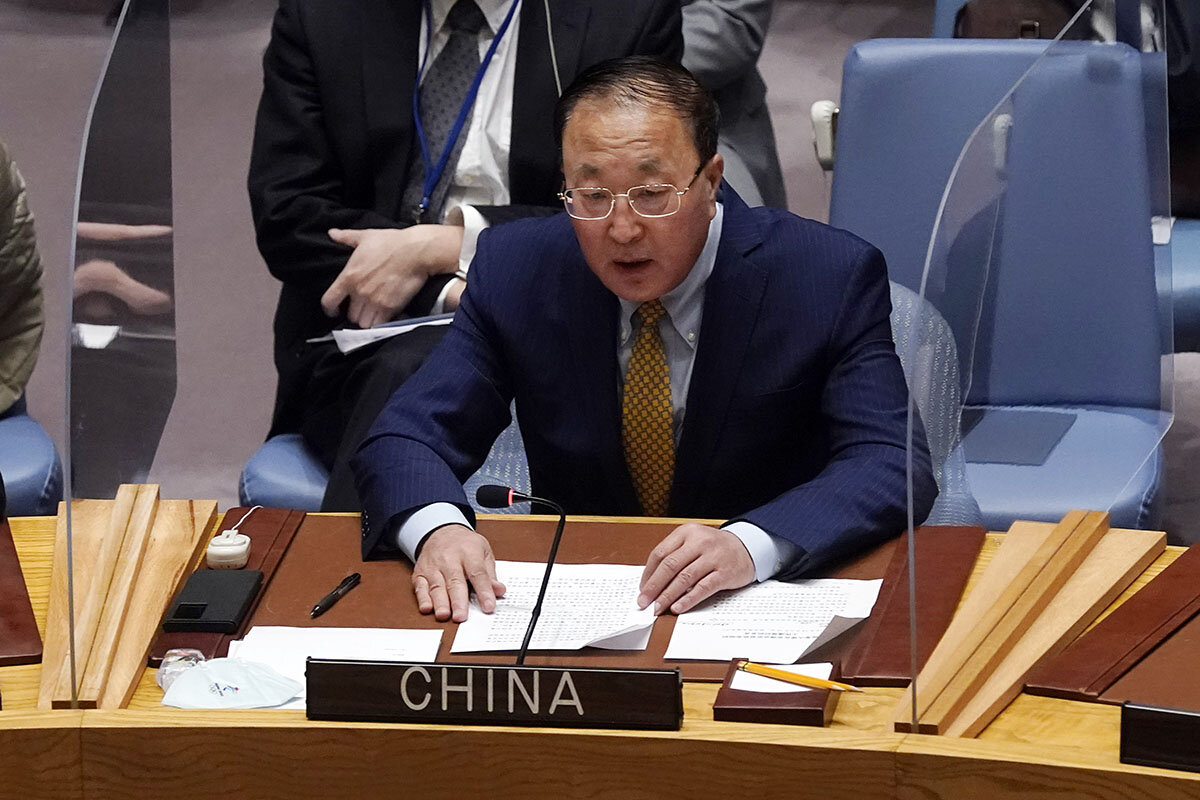
Mr. Putin’s invasion has also disrupted China’s ambitious Belt and Road initiative to create a land bridge for growing Chinese trade with Europe and beyond. The land bridge’s key rail links go through Russia and Belarus – both now targeted by unexpectedly far-reaching Western sanctions.
As Washington has increasingly been signaling to Mr. Xi, China itself could risk sanctions if it does anything to help Russia offset the impact of Western sanctions.
That presents a conundrum for Beijing. On the one hand, it does not want – and almost surely does not intend – to turn its back on its Russian ally. Besides, it depends on significant imports of gas and other commodities from Russia.
Still, China’s trade with Russia is dwarfed by its commerce with the West, amounting to just one-tenth of the total business it does with Europe and America. That is trade that Beijing will not want to endanger.
China’s response to the sanctions problem may well turn out to be the economic equivalent of the fence-sitting it has adopted at the United Nations.
It will likely increase commodity trade with Russia, and it may boost its exports of basic consumer products, to help the Russian government. But sanctions-busting by major Chinese companies seems less likely, if only because of their own self-interest in safeguarding far more lucrative Western markets.
A potentially bigger, long-term problem for China is harder to quantify: the reputational risk it would run, not just with governments, but with Western citizens and major Western businesses, if Mr. Xi is seen to be an enabler of the brutal violence being visited on Ukraine.
The widespread sense of horror and anger at the violence has already helped prompt an array of sanctions far tougher than Mr. Xi could have expected.
Maybe, over time, that sense of unity and purpose in the West will wane. Mr. Xi will hope so.
But if not, fence-sitting – as the old saying goes – could yet leave China with a serious case of splinters.

Economic stability: What the Fed can and can’t do
How do you solve a problem like inflation? Our reporter looks at how the U.S. Federal Reserve may manage the delicate balance between slowing price hikes and preventing a recession.
- Quick Read
- Deep Read ( 5 Min. )
The Federal Reserve faces a balancing act in the months ahead: tamping down price pressures while also seeking to avoid squeezing the economy into a recession. The institution that Congress tasked with stabilizing prices and keeping the economy on track is aiming to do just that – but with critics saying it bears part of the blame for letting inflation out of the barn over the past year.
“I don’t think the Fed can do too much” to control the supply side of the inflation equation, like the flow of computer chips or oil, says William Yu, an economist at the University of California, Los Angeles. Yet through its influence over money supply and credit conditions, the Fed can affect overall consumer demand, and that’s an equally important piece of the policy puzzle, he says.
“The Fed needs to be very careful, very nimble,” he adds.
But some economists say forbearance is warranted, too. “It’s easy to be a Monday morning quarterback,” says Tufts University economist Michael Klein. “In the spring of 2020, we were facing the most precipitous decline in employment that we’ve seen. There was the possibility of a real financial disruption. And they stepped in.”
Economic stability: What the Fed can and can’t do
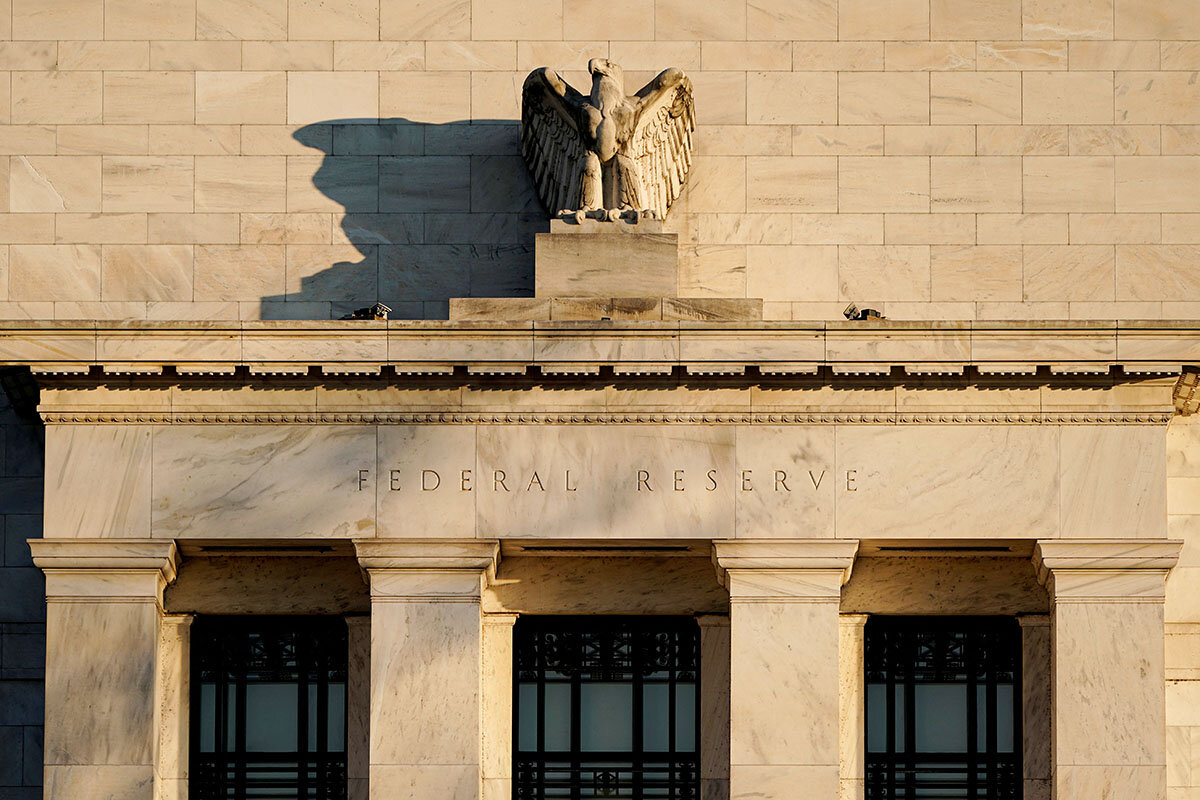
As the Federal Reserve starts to tighten its money spigot for the economy for the first time since the pandemic began in 2020, today’s boost in interest rates feels different.
This policy about-face comes in circumstances more sensitive than most economic cycles: Inflation is at a 40-year high, a war in Ukraine is rattling global energy and food markets, and the pandemic still weighs on households around the world.
Amid all this, the Fed is expected to act as an economic stabilizer.
The central bank is not a wizard, but Congress has granted it vast financial clout – with the mission of pursuing twin goals of price stability and full employment. Historically, this translates into keeping inflation under control and seeking to minimize recessions or financial panics.
The Fed played a big role in facing down a panic in 2020 as the pandemic lockdowns struck. But sometimes the economy’s stabilizer-in-chief can also be a source of turbulence. The current inflation surge has been caused partly by the Fed’s own monetary stimulus, which has boosted consumer demand even as other forces – the pandemic and now war – have crimped supply.
“There are just a lot of really adverse shocks right now,” says Tufts University economist Michael Klein, citing price jumps in 2021 plus surges in the cost of oil and wheat since Russia invaded Ukraine last month. “We’re going to probably see some aggressive moves by the Fed. … There is concern that inflation expectations might become embedded, although the data from financial markets doesn’t seem to suggest that yet.”
A delicate balancing act
Today, U.S. consumers are feeling price pressures at gas pumps and checkout lines. They are signaling their worry in polls on economic confidence. And their expectations for future inflation – which can become a self-fulfilling prophecy – have edged up.
The Fed faces a balancing act in the months ahead: tamping down price pressures while also seeking to avoid squeezing the economy into a recession. And they are under pressure to show a vigilance that hasn’t been so needed in 40 years – since legendary Fed Chairman Paul Volcker tamed inflation with sharp interest rate hikes in the early 1980s.
But even as the Fed has been drawing criticism for being slow to act, some economists say a bit of forbearance is warranted.
“It’s easy to be a Monday morning quarterback,” says Dr. Klein, executive editor of EconoFact, a website where academic economists discuss hot topics including inflation.
“In the spring of 2020, we were facing the most precipitous decline in employment that we’ve seen,” he says. “There was the possibility of a real financial disruption. And they stepped in. And it didn’t make the news because [such a crisis] didn’t happen, but it could have been a really problematic thing.”
Similarly, during and after the global financial crisis of 2008, the Fed’s efforts addressed very real concerns.
Helen Popper, an international economist at Santa Clara University in California, says that even as the Fed sought to restore sound growth over the past decade, it hadn’t grown blind to inflation risks. Prior to the pandemic, policymakers had begun to tighten interest rates. Now, that process is beginning again.
“It’s like steering a big boat. You can’t react to every little thing,” she says.

Macrotrends, U.S. Bureau of Labor Statistics, World Bank
“They were too confident”
Some worry, however, that the Fed has fallen behind the curve, making it harder to simultaneously tamp down inflation and avoid a recession.
A new policy framework in 2020 described public inflation expectations as “well anchored” and said an “appropriate monetary policy will likely aim to achieve inflation moderately above 2 percent for some time.”
Mohamed El-Erian, a finance expert and president of Queens’ College at the University of Cambridge, wrote recently that “that [framework] quickly became outdated and counterproductive.”
On one hand, the Fed had reason to focus on reviving the pandemic economy – which is still falling short of pre-pandemic employment levels.
But on the other, the central bank’s own stimulus was matched by big spending packages from the U.S. Congress. All of that bolstered consumer demand even as supplies of goods were being constrained by the pandemic’s effects on the global supply chain and on the availability of workers.
And now the war in Ukraine and a new COVID-19 lockdown in parts of China will be adding to global strains on the supplies of everything from oil to grains to manufactured goods like phones and cars.

“Right now we need tightening. … The Federal Reserve really kind of played down this inflation problem,” says William Yu, an economist at the University of California, Los Angeles. “They were too confident that they were able to control it” and are playing catch-up.
“I don’t think the Fed can do too much” to control the supply side of the inflation equation, like boosting production of oil or semiconductors, says Dr. Yu.
Yet through its influence over money supply and credit conditions, the Fed can affect overall consumer demand, and that’s an equally important piece of the policy puzzle, he says.
What lies ahead is a delicate test in which one danger is “stagflation” – with policymakers achieving stability in neither prices nor economic growth.
“The Fed needs to be very careful, very nimble,” Dr. Yu says.
An era of global inflation?
After today’s move – which raises the Fed’s short-term lending rate from near zero (induced by the pandemic) to a target of 0.25% to 0.5% – additional interest rate hikes are expected in coming months as part of a steady shift away from monetary stimulus.
Multiple events outside the Fed’s control could help too. An easing of the war in Ukraine, global efforts to boost food and energy production, or unwinding kinks in the global supply chains would all reduce price pressures.
Yet some finance experts say an era of global inflation may persist. British economist Charles Goodhart argues that, after a time of abundant labor supply as the Cold War ended and China’s market opened, the world is now in a period when working-age people will be in relatively shorter supply in many nations.
Russia’s invasion of Ukraine adds its own longer term danger. A new analysis from experts at the International Monetary Fund says that “increased geopolitical tension further raises risks of economic fragmentation, especially for trade and technology.”
This doesn’t mean solutions won’t be found – by central banks and others around the world.
But “there’s just huge complexity going on here,” Dr. Klein, from Tufts, says. “A lot of these events are beyond what the Fed can control, but it does have to react to them.”

Macrotrends, U.S. Bureau of Labor Statistics, World Bank

Points of Progress
Where scales tipped for women, LGBTQ, and Indigenous people
Court rulings may lead public opinion, or follow it and cement what most people agree is right. In our progress points this week, we see rising respect for Indigenous rights, environmental stewardship, affirmation of identity, and security for women.
Where scales tipped for women, LGBTQ, and Indigenous people
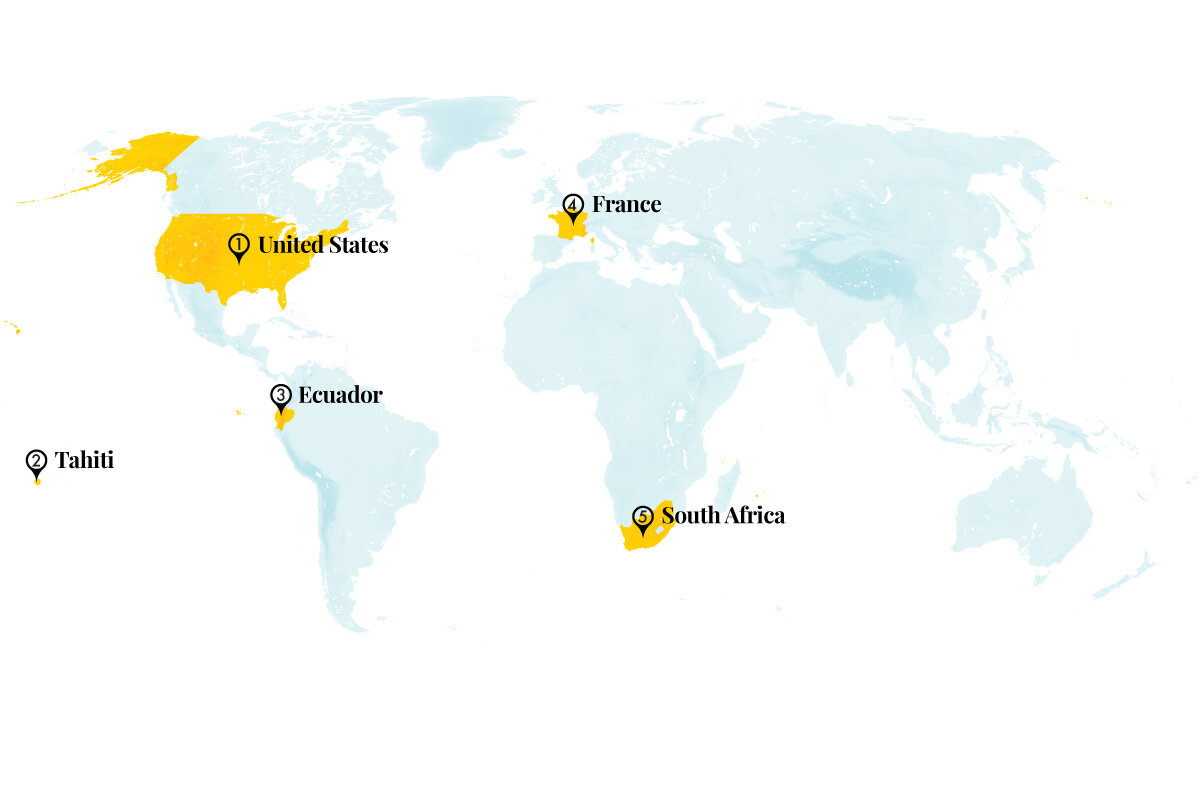
As well as change targeting specific populations, one commitment in our roundup – to further reduce the impact of fossil fuels – was made by an international company that affects billions of people.
1. United States
Exxon Mobil committed to carbon neutrality in its global operations by 2050, in response to pressure from investors and the public. The oil giant will reduce carbon emissions by protecting against methane leaks and modernizing equipment while also investing in new technologies like carbon capture, hydrogen power, and biofuels. The decision aligns the company with the Oil and Gas Climate Initiative, a consortium working to speed up the industry’s response to climate change, and follows similar moves by large European oil companies like BP and Royal Dutch Shell.
When it comes to transitioning to renewable energy, Exxon lags behind rivals. And environmentalists have been quick to criticize the new goals for not applying to emissions linked to the use of gasoline and natural gas, which constitute around five times the emissions caused by production. But the announcement may be one sign that priorities are shifting. Last May, Exxon was pressured to take on three new directors recommended by an activist hedge fund to help the firm operate in a low-carbon world, and the company is dedicating $15 billion by 2027 to initiatives that will reduce emissions.
Thomson Reuters Foundation, The Wall Street Journal

2. Tahiti
A sprawling coral reef seemingly untouched by climate change was discovered off the coast of Tahiti. The pristine reef, which resembles a vast bed of roses, stretches nearly 2 miles, making it “one of the most extensive healthy coral reefs on record,” according to UNESCO. Scientists have grown increasingly concerned about the effects of climate change on coral reefs worldwide, which cover only around 1% of the seafloor but provide a habitat for over 25% of sea life.
Many reefs in the South Pacific were hit by a wave of coral bleaching in 2019. Cooler temperatures likely protected this particular reef, which sits at between 100 and 300 feet below the ocean surface. That depth made it difficult for researchers and photographers to study the area, a feat accomplished only with special breathing equipment and a type of mirrorless full-frame camera that works in low light. The find offers new hope that scientists will discover more thriving reefs, with 80% of the world’s seabed left to map. As UNESCO Director-General Audrey Azoulay put it, “To date, we know the surface of the moon better than the deep ocean.”
The New York Times, Deutsche Welle
3. Ecuador
Extractive oil and mining projects now need consent from Indigenous communities in Ecuador. The nation’s constitution guarantees Indigenous people the right to be consulted before extractive development projects take shape on or near their territory. In practice, the process has not always been upheld. The highest court recently reaffirmed this requirement by ruling that the rights of the Sinangoe Indigenous community were violated in 2018 when the government sold mining concessions without consultation on Sinangoe territory in the Amazon.

In turn, the court ruled that the state must ensure a “clear and accessible” consultation that includes community consent, strengthening land protections for each of Ecuador’s 14 Indigenous nations. The government can move forward with extractive development without consent in “exceptional circumstances,” but never if a project causes “disproportionate sacrifice” to the community and local ecosystem. Indigenous groups celebrated the ruling. “The Constitutional Court ratified that the state has to listen to us, so this sets a very important precedent for us, and for the whole Indigenous world, because our voices are not always listened to,” said Nixon Andy of the Sinangoe community.
Mongabay
4. France
France banned “conversion therapy” in defense of LGBTQ rights. The National Assembly voted unanimously to ban the scientifically discredited practice, defined in the law as efforts that “aim to modify or reprimand sexual orientation or gender identity.” Conversion therapy is an umbrella term for a wide range of formal and informal faith-based, psychotherapy, and medical interventions. Offenders will face up to two years in jail and €30,000 ($34,000) in fines. These penalties increase for cases that involve minors or other vulnerable groups.

Human rights organizations refute the underlying assumption of conversion therapy – that sexual orientation or gender identity can and should be changed. Attempts to alter a person’s identity are inherently harmful, degrading, and discriminatory, according to a United Nations human rights report, which calls for a global ban on the practice that “may amount to torture” in severe cases. The measure had already received overwhelming support in the French upper house, although 28 conservative legislators opposed its passage. “Let’s be proud of it,” tweeted President Emmanuel Macron. “Because being oneself is not a crime.”
France 24, BBC
5. South Africa
South Africa passed new legislation to better protect women from gender-based violence. A government study from 2020 found that 21% of women in South Africa have experienced physical violence by a partner, with higher rates among lower-income women. The legislation broadens access to protection orders, allows intermediaries to give evidence of abuse in court, recognizes “sexual intimidation” as a punishable offense, and obligates adults to report sexual offenses against vulnerable persons, among other changes.
The laws are part of the National Strategic Plan on Gender-Based Violence & Femicide, a collaboration among government agencies, international organizations, and local civil society groups that grew out of a 2018 summit. President Cyril Ramaphosa acknowledged that strengthening legal recourse against domestic violence does not address the root problems behind abuse. But he sees the move as a step in the right direction: “This puts into law the principle that violence against women and children is everyone’s responsibility.”
South Africa Government News Agency
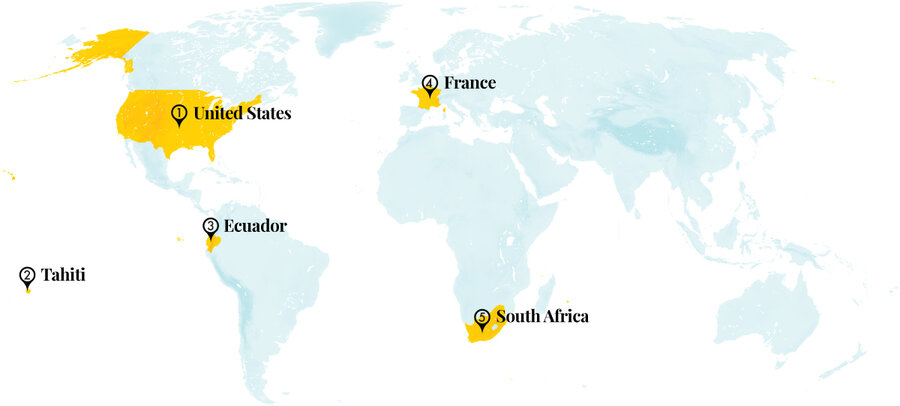
Other headline stories we’re watching
(Get live updates throughout the day.)The Monitor's View
Gavels for truth against Russia’s war lies
- Quick Read
- Deep Read ( 2 Min. )
-
By the Monitor's Editorial Board
The United Nations’ top court on Wednesday ordered Russia to end its military assault on Ukraine. Yet the real punch in this ruling by the International Court of Justice (ICJ) isn’t the order itself, which is largely unenforceable. Rather, it is a finding that Ukraine has a plausible argument against one of Russia’s more puzzling excuses for the war: preventing alleged genocide against Ukraine’s minority Russian speakers.
Defeating Russia’s lies with truth has been a potent weapon for Ukraine so far in rallying both its people and global support – as well as reaching the Russian people. One of its best avenues are international courts like the ICJ, also known as the World Court.
“President [Vladimir] Putin’s short game is force. The world’s long game is law,” said Harold Koh, a lawyer for Ukraine who participated in the March 7 hearing before the ICJ.
Countering Russia’s propaganda is taking place on many fronts, but it may be the meticulous work of these courts that might be most persuasive. In all attempts at justice, the first step is eliciting the facts behind a crime or ripping away the justifications for it.
Gavels for truth against Russia’s war lies

The United Nations’ top court on Wednesday ordered Russia to end its military assault on Ukraine, citing “innumerable civilian deaths.” Yet the real punch in this ruling by the International Court of Justice (ICJ) isn’t the order itself, which is largely unenforceable. Rather, it is a finding that Ukraine has a plausible argument against one of Russia’s more puzzling excuses for the war: preventing alleged genocide against Ukraine’s minority Russian speakers.
Defeating Russia’s lies with truth has been a potent weapon for Ukraine so far in rallying both its people and global support – as well as reaching the Russian people. One of its best avenues are international courts like the ICJ, also known as the World Court.
“President [Vladimir] Putin’s short game is force. The world’s long game is law,” said Harold Koh, a lawyer for Ukraine who participated in the March 7 hearing before the ICJ.
Four days into the invasion, the prosecutor for the International Criminal Court announced that he would start an investigation into Russian war crimes and crimes against humanity committed in Ukraine. The speed of the decision was unprecedented for the world’s only permanent court for atrocity crimes.
Six days after the invasion, the European Court of Human Rights granted an interim order for Russia to cease attacks on civilians and to provide corridors for humanitarian aid.
Any of these courts’ findings and rulings will probably not be accepted by Russia or could come after the conflict ends. And criminal rulings against particular Russian leaders or soldiers might only prevent them from leaving their country out of fear of arrest. Yet for now, the preliminary moves of the courts have bolstered international resolve to support Ukraine, hold Russia accountable, and reset normal of international order.
Countering Russia’s propaganda is taking place on many fronts, but it may be the meticulous work of these courts that might be most persuasive. In all attempts at justice, the first step is eliciting the facts behind a crime or ripping away the justifications for it.
The late Russian dissident Andrei Sakharov once wrote, “We must make good the demands of reason and create a life worthy of ourselves and the goals we only dimly perceive.” In relying on international courts to expose the truth about Russia’s war, Ukrainians are on one crucial path to liberating their country of foreign forces. A lie exposed may be as good as a battalion of soldiers.

A Christian Science Perspective
Each weekday, the Monitor includes one clearly labeled religious article offering spiritual insight on contemporary issues, including the news. The publication – in its various forms – is produced for anyone who cares about the progress of the human endeavor around the world and seeks news reported with compassion, intelligence, and an essentially constructive lens. For many, that caring has religious roots. For many, it does not. The Monitor has always embraced both audiences. The Monitor is owned by a church – The First Church of Christ, Scientist, in Boston – whose founder was concerned with both the state of the world and the quality of available news.
Find a rock when the harsh winds blow
- Quick Read
- Read or Listen ( 2 Min. )
-
By Catherine De Jocas
Even when it seems a life has ended, our unity with the Life that is God stands eternal, and can never be lost. This is a powerful foundation for healing grief, as a woman experienced after losing her dad.
Find a rock when the harsh winds blow
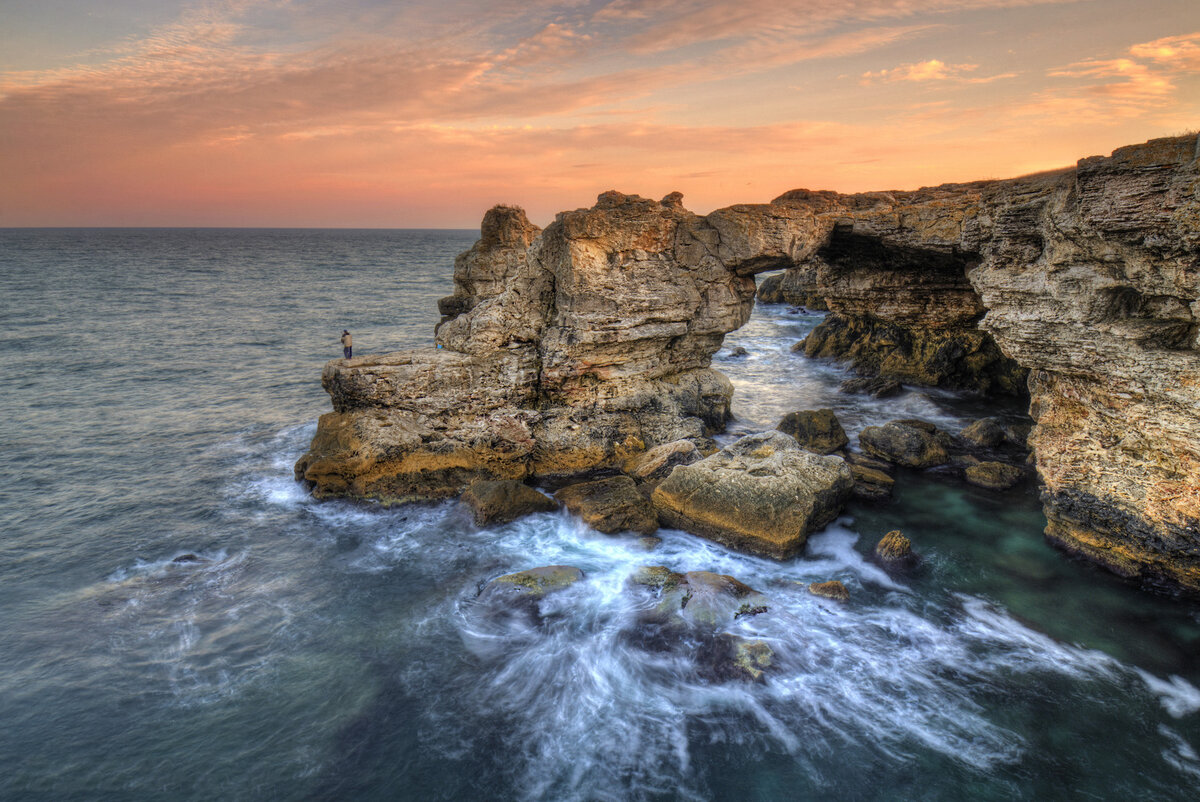
It’s the call you never want to get. It was my mom telling me that my dad had just passed away. I hung up the phone and quietly turned to God, asking Him what I needed to know at that moment.
“I was not born into matter, and I do not die out of matter,” came the reply.
That was just what I needed. That message hints at how life is really spiritual and eternal.
I was grateful that it was Wednesday, so that I could attend a healing Christian Science service that evening. One of the scriptural selections that was shared at that gathering was this one from the book of Matthew: “Good Master, what good thing shall I do, that I may have eternal life?” (19:16). The seeker in this biblical account was reaching out for a more permanent sense of life. Perhaps, like me, he had been shaken by events that suggested the fragility of life.
Jesus’ response pointed to the spiritual essence of life in God, who is the only Life, the only good, there truly is. Jesus was showing the man that the benefits of eternal Life are something we can experience now, not just hereafter. Our unity with Life, God, is eternal.
The writings of Mary Baker Eddy – who discovered and founded Christian Science, based on Jesus’ teachings – have had a comforting, healing influence on the brokenhearted. The ideas they convey awaken us today to the reassuring spiritual fact that Life is indeed without a beginning or an ending.
These ideas helped me realize that my dad enjoyed a lengthy, vibrant, and progressive earthly experience, reflecting the continuous activity of God – and that he will continue to reflect that divine activity.
Whether we are staring down the belief of our own mortality or mourning someone dear to us, Life divine stands eternally, never wavering. And this is the ageless Rock that grounds us when the harsh winds blow.
Adapted from the March 1, 2022, Christian Science Daily Lift podcast.

A message of love
A baby named Kyiv

A look ahead
Thanks for joining us. Come back tomorrow: We’re working on a review of the latest Pixar animated film. It’s about an Asian teenager in Toronto, Canada, who’s dealing with puberty, a helicopter parent, and embracing change.



